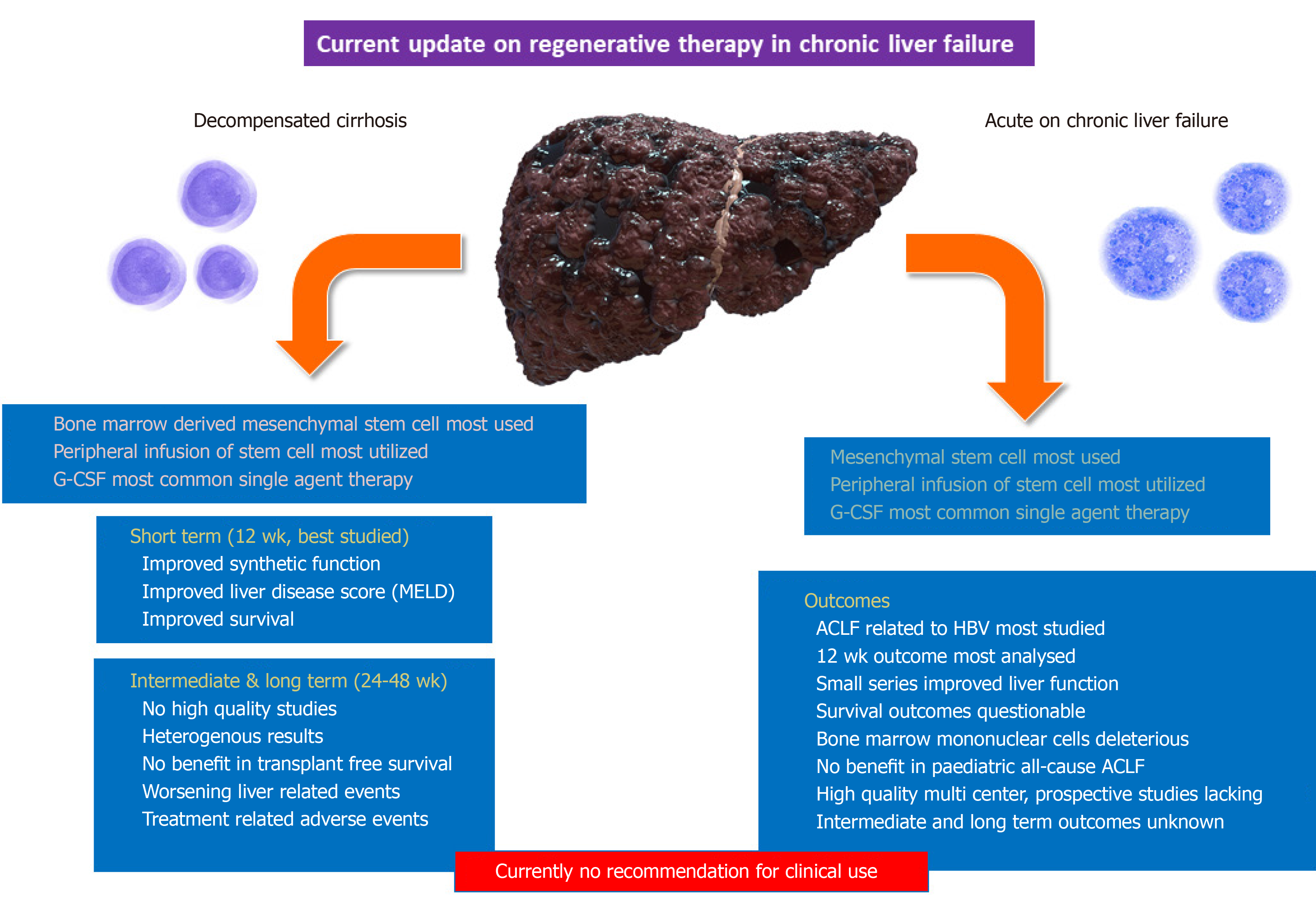Copyright
©The Author(s) 2020.
World J Stem Cells. Oct 26, 2020; 12(10): 1124-1132
Published online Oct 26, 2020. doi: 10.4252/wjsc.v12.i10.1124
Published online Oct 26, 2020. doi: 10.4252/wjsc.v12.i10.1124
Figure 1 Processes associated with liver regeneration in acute on chronic liver failure.
With acute injury, multiple cellular components in the blood and bone marrow as well as within the liver microenvironment are activated. These then secrete cytokines and chemokines that will drive systemic inflammation towards organ failure or help mitigate injury, leading to hepatocyte replication and liver regeneration. These processes are dependent on the host, environment and intensity of acute insult. Further, various growth factors secreted from the tissue and bone marrow compartments in the presence of cytokines activate signaling pathways that are beneficial in promoting mitogenesis in the liver. This activates and increases hepatic progenitor cells that replicate and proliferate to contain the liver injury and replace dysfunctional liver mass. IL: Interleukin; TNF: Tumor necrosis factor; C5a: Complement 5a; G-CSF: Granulocyte-colony stimulating factor; ICAM: Intracellular adhesion molecule; TGF: Transforming growth factor; STAT: Signal transducer and activator of transcription; Wnt: Wingless and Int-1; BCL: B cell lymphoma; PI3K/Akt: Phosphatidylinositol 3-kinase/protein kinase B; TWEAK: Tumor necrosis factor-related weak inducer of apoptosis.
Figure 2 Contemporary update on role of stem cell or growth factor therapy for patients with chronic and acute-on-chronic liver failure.
MELD: Model for end stage liver disease; G-CSF: Granulocyte-colony stimulating factor; ACLF: Acute-on-chronic liver failure.
- Citation: Philips CA, Augustine P. Still 'dwelling in the possibility' - critical update on stem cell therapy for acute on chronic liver failure. World J Stem Cells 2020; 12(10): 1124-1132
- URL: https://www.wjgnet.com/1948-0210/full/v12/i10/1124.htm
- DOI: https://dx.doi.org/10.4252/wjsc.v12.i10.1124










